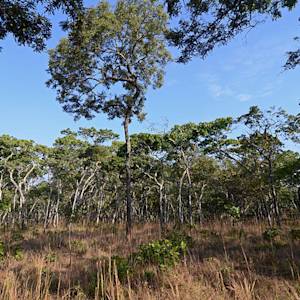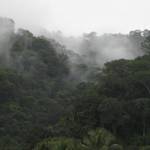South China-Vietnam Subtropical Evergreen Forests
2023 CE • China and Vietnam
"The South China-Vietnam Subtropical Evergreen Forests ecoregion extends from northern Vietnam into southeastern China, and includes Hainan Island. The forests represent a transitional zone from the tropical forests of Vietnam to the subtropical and mixed forests of southern China. The landscape in this area is dramatic, displaying a complex topography of forested mountains incised by a complex system of rivers and streams, lined with riparian forests . . . This region shows strong floristic relationships with areas to the north in China, and regional endemism is high. But very little pristine forest remains within this ecoregion; most forests have been converted or degraded . . . This ecoregion also boast rich fauna, especially with birds and amphibians. For example, over 450 species of birds can be found in Hong Kong alone, making up one-third of the total bird species recorded in China. Very few species larger than a deer now survive in these forests, victims to the rampant poaching to supply the high demand for wildlife, and their parts and products for a variety of uses: from food to making alcohol, traditional medicines, trinkets, and adornments. The critically endangered Chinese pangolin, one of the most trafficked mammals in the world, are poached across the ecoregion for their meat and scales . . . The natural habitat for wildlife has also been converted, fragmented, and degraded by large-scale shifting cultivation, permanent agriculture, logging," and urbanization.
Eric Wikramanayake, "South China-Vietnam Subtropical Evergreen Forests," One Earth.
Image: Evilbish, CC BY-SA 3.0, via Wikimedia Commons


Learn about Maya Lin’s fifth and final memorial: a multi-platform science based artwork that presents an ecological history of our world - past, present, and future.

Discover ecological histories and stories of former abundance, loss, and recovery on the map of memory.

Learn how we can reduce our emissions and protect and restore species and habitats – around the world.

See how art can help us rethink the problems we face, and give us hope that each one of us can make a difference.

Help make a global memorial something personal and close to home. Share your stories of the natural world.


